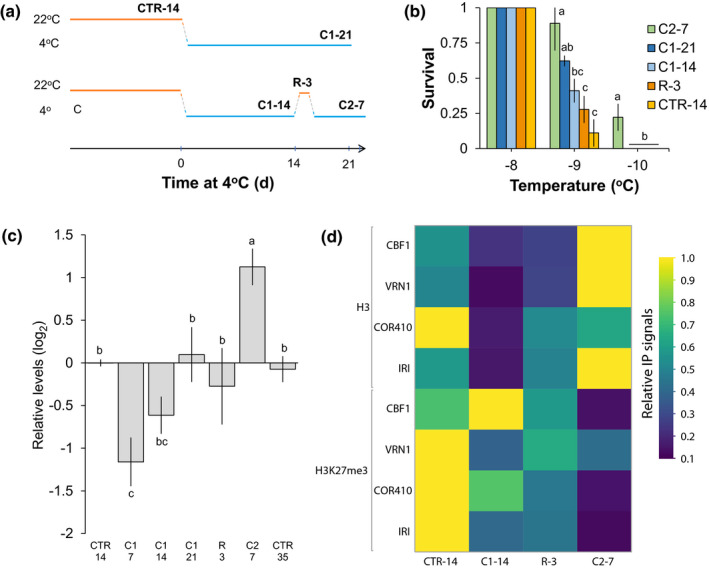Fig. 1.

Repeated exposure to chilling leads to higher freezing tolerance, and to global and gene‐specific epigenetic changes. (a) Experimental design where one period of recovery at 22°C was inserted during cold acclimation under constant‐chilling (CC) at 4°C. C1, first exposure to chilling for 14 or 21 d (C1‐14 and C1‐21); C2‐7, plants re‐exposed to chilling for 7 d after recovery R‐3; CTR‐14, plants grown under control conditions at 22°C; R‐3, plants recovered from chilling for 3 d. (b) Survival rate under freezing conditions of CTR‐14, C1‐14, C1‐21, R‐3, and C2‐7 Brachypodium distachyon plants measured by whole‐plant freeze tests. (c) Relative global DNA‐methylation. C1, first exposure to chilling for 7, 14 or 21 d (C1‐7, C1‐14, C1‐21); C2‐7, second exposure to chilling for 7 d; CTR‐14, B. distachyon plants grown under control conditions at 22°C for 14 d; CTR‐35, B. distachyon plants grown under control conditions at 22°C for 35 d; R‐3, recovery from chilling at 22°C for 3 d. (d) Levels of histone 3 (H3) relative to input levels and of H3K27me3 relative to H3 of cold‐regulated genes C‐REPEAT BINDING FACTOR1 (CBF1), VERNALIZATION1 (VRN1), COLD‐REGULATED410 (COR410) and ICE RECRYSTALLIZATION INHIBITOR (IRI) at CTR‐14, C1‐14, R‐3 and C2‐7. Different letters indicate statistical difference; P < 0.05; error bars represent SD between three biological replicates.
